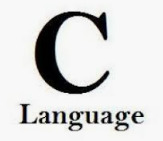#storesring
Explore tagged Tumblr posts
Photo

ring store, ring shop, fashionwithkorea.com, https://www.fashionwithkorea.com #ring #rings #ringfashion #fashionring #womanring #womenring #ringwoman #ringwomen #ringstore #ringsstore #ringstores #ringshopping #findring #storering #storesring #ringshop #shopsring #ringsupplier #ringcompany #ringcompanies #ringscompany #ringagency #companyring #buyring #buyrings #ringshops #findrings #戒指 #戒指店 #买戒指
#ring#rings#ringfashion#fashionring#womanring#womenring#ringwoman#ringwomen#ringstore#ringsstore#ringstores#ringshopping#findring#storering#storesring#ringshop#shopsring#ringsupplier#ringcompany#ringcompanies#ringscompany#ringagency#companyring#buyring#buyrings#ringshops#findrings#戒指#戒指店#买戒指
1 note
·
View note
Photo

ring shops, fashionwithkorea.com, https://www.fashionwithkorea.com #ring #rings #ringfashion #fashionring #womanring #womenring #ringwoman #ringwomen #ringstore #ringsstore #ringstores #ringshopping #findring #storering #storesring #ringshop #shopsring #ringsupplier #ringcompany #ringcompanies #ringscompany #ringagency #companyring #buyring #buyrings #ringshops #findrings #戒指 #戒指店 #买戒指
#ring#rings#ringfashion#fashionring#womanring#womenring#ringwoman#ringwomen#ringstore#ringsstore#ringstores#ringshopping#findring#storering#storesring#ringshop#shopsring#ringsupplier#ringcompany#ringcompanies#ringscompany#ringagency#companyring#buyring#buyrings#ringshops#findrings#戒指#戒指店#买戒指
1 note
·
View note
Text
300+ TOP C Language LAB VIVA Questions with Answers Pdf
C Language LAB VIVA Questions :-
1. Who developed C language? C language was developed by Dennis Ritchie in 1970 at Bell Laboratories. 2. Which type of language is C? C is a high – level language and general purpose structured programming language. 3. What is a compiler? Compile is a software program that transfer program developed in high level language intoexecutable object code 4. What is IDE? The process of editing, compiling, running and debugging is managed by a single integratedapplication known as Integrated Development Environment (IDE) 5. What is a program? A computer program is a collection of the instructions necessary to solve a specific problem. 6. What is an algorithm? The approach or method that is used to solve the problem is known as algorithm. 7. What is structure of C program? A C program contains Documentation section, Link section, Definition section, Globaldeclaration section, Main function and other user defined functions 8. What is a C token and types of C tokens? The smallest individual units are known as C tokens. C has six types of tokens Keywords,Constants, Identifiers, Strings, Operators and Special symbols. 9.What is a Keyword? Keywords are building blocks for program statements and have fixed meanings and thesemeanings cannot be changed. 10.How many Keywords (reserve words) are in C? There are 32 Keywords in C language.

C Language LAB VIVA Questions 11.What is an Identifier? Identifiers are user-defined names given to variables, functions and arrays. 12.What is a Constant and types of constants in C? Constants are fixed values that do not change during the program execution. Types of constants are Numeric Constants (Integer and Real) and Character Constants (SingleCharacter, String Constants). 13.What are the Back Slash character constants or Escape sequence charactersavailable in C? Back Slash character constant are \t, \n, \0 14.What is a variable? Variables are user-defined names given to memory locations and are used to store values. Avariable may have different values at different times during program execution 15.What are the Data Types present in C? Primary or Fundamental Data types (int, float, char), Derived Data types(arrays, pointers)and User-Defined data types(structures, unions, enum) 16.How to declare a variable? The syntax for declaring variable isdata type variable_name-1, variable_name-2,....variable_name-n; 17.What is meant by initialization and how we initialize a variable? While declaring a variable assigning value is known as initialization. Variable can beinitialized by using assignment operator (=). 18.What are integer variable, floating-point variable and character variable? A variable which stores integer constants are called integer variable. A variable which storesreal values are called floating-point variable. A variable which stores character constants arecalled character variables. 19.How many types of operator or there in C? C consist Arithmetic Operators (+, -, *, /,%), Relational Operators (=, !=), LogicalOperators (&&, ||, !), Assignment Operators (=, +=, -=, *=, /=), Increment and DecrementOperators (++, --), Conditional Operator(?:), Bitwise Operators(, ~, &, |, ^) andSpecial Operators (. , ->, &, *, sizeof) 20. What is RAM ? RAM – Random Access Memory is a temporary storage medium in a computer. RAM is a volatile memory i.e all data stored in RAM will be erased when the computer is switched off. 21. What do mean by network ? Computer networking refers to connecting computers to share data, application software and hardware divices. Networks allow sharing of information among various computers and permit users to share files 22. List a few unconditional control statement in C. break statement continue statement goto statement exit() function 23. What is an array ? An array is a collection of values of the same data type. Values in array are accessed using array name with subscripts in brackets. Synatax of array declaration is data type array_ name; 24. What is Multidimensional Arrays An array with more than one index value is called a multidimensional array. To declare a multidimensional array you can do follow syntax data type array_ name ….; 25. Define string ? An array of characters is known as a string.for example char st; this statement declares a string array with 80 characters . 26. Mention four important string handling functions in C languages . There are four important string handling functions in C languages . strlen(); trcpy(); strcat(); strcmp(); The header file #include is used when these functions are called in a C program. 27. Explain about the constants which help in debugging? A #if directive test can be offered with #else and #else if directives. This allows conditional branching of the program to run sections of the code according to the result. Constants defined with a #define directive can be undefined with the #undef directive. The #ifdef directive has a companion directive #ifndef. These commands can be useful when debugging problem code to hide and unhide sections of the program. 28. Define and explain about ! Operator? The logical operator ! NOT is a unary operator that is used before a single operand. It returns the inverse value of the given operand so if the variable “c” had a value of true then! C would return value of false. The not operator is very much useful in C programs because it can change the value of variables with successful iterations. This ensures that on each pass the value is changed. 29. What is operator precedence? Operator precedence defines the order in which C evaluates expressions. e.g. in the expression a=6+b*3, the order of precedence determines whether the addition or the multiplication is completed first. Operators on the same row have equal precedence. 30. Explain about the functions strcat() and strcmp()? This function concatenates the source string at the end of the target string. Strcmp() function compares two strings to find out whether they are the same or different. The two strings are compared character by character until there is a mismatch or end of one of the strings is reached, whichever occurs first. If in case two strings are identical, a value of zero is returned. If there is no matches between two strings then a difference of the two non matching values are returned according to ASCII values. 31. Define function A function is a module or block of program code which deals with a particular task. Each function has a name or identifier by which is used to refer to it in a program. A function can accept a number of parameters or values which pass information from outside, and consists of a number of statements and declarations, enclosed by curly braces { }, which make up the doing part of the object 32. Differentiate built-in functions and user – defined functions. Built – in functions are used to perform standard operations such as finding the square root of a number, absolute value and so on. These are available along with the C compiler and are included in a program using the header files math.h, s tring.h and so on. User defined functions are written by the user or programmer to compute a value or perform a task. It contains a statement block which is executed during the runtime whenever it is called by the main program. 33. Distinguish between actual and formal arguments. Actual arguments are variables whose values are supplied to the function in any function call. Formal arguments are variables used to receive the values of actual arguments from the calling program. 34. Explain the concept and use of type void. A function which does not return a value directly to the calling program is referred as a void function. The void functions are commonly used to perform a task and they can return many values through global variable declaration. 35. What is recursion ? A function calling itself again and again to compute a value is referref to as recursive function or recursion. Recursion is useful for branching processes and is effective where terms are generated successively to compute a value. c programming viva questions and answers pdf :: Read the full article
0 notes
Video
If I EvePure Love , Gerald Harris , new album release March 3 ,2020 , available in digital stores , and available in stores , Electricfetus 2000 4th S Minneapolis Mn Cheapo Disc , 1222 https://www.cheapodisc.com , and available in all storesr Wandered Why , Trailer , single from the Pure Love album from ...
0 notes